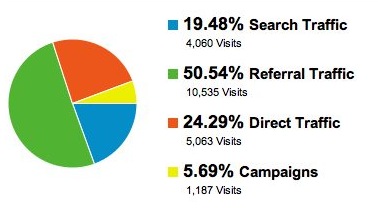
*This is the beginning of our month long series on SEO.*
SEO is one of those topics that everyone talks about, but very few understand. Let’s break it down and make it simple, shall we?

What does SEO stand for?
SEO stands for Search Engine Optimization.
What is SEO?
SEO is the process of improving the visibility of a website or blog in search results via search engines such as google. Search engines help connect internet users, YOU, with the information that your needing or searching for.
Search engines analyze the words on websites, especially words that are repeated in boldface, in a link, in a headline, and so on. The engine records those important words or phrases—the site’s keywords—on its servers.
When you type the words you’re looking for into a search box (such as google search), the engine tries to match your words with the words from websites it has analyzed, and then it delivers a list of matches. The search engine will organize the list from best to worst, ranking the results according to a variety of criteria (such as how many other sites find a page valuable and link to it).
Why you should care?
The higher ranked (or earlier your site is listed) on the search results page, and more frequently your website appears in the search results list, the more visitors you will receive from the search engine’s users. More visitors can mean more page views, more leads, more sales, more ad revenue, and other business benefits that you don’t want to be missing out on.
What are the basic principles for good SEO for writers?
- Offer original unique content. You want it to have relevance to your readers and create value to your site while also being unique.
- Strategically place keywords in your post so that they describe your content and correspond with the phrases people are using to perform their searches.
- Embed your keywords: in the title, headings, links, metadata, and image and video tags.
- Deliver on the promise of your keywords. You don’t want to be luring people to your site with words that don’t accurately represent your content.
- Give link love. Link to other relevant sites with good content and encourage those sites to link to yours.
- Optimize your site for “readers first” and for search engines second. Implement SEO without turning your text into nonsense.
Let’s compare two websites and their SEO strategies.
These two sites are owned by my husband and I, and one of them uses SEO techniques to drive traffic and one does not.
My husband has been using SEO strategies on his website, Good Financial Cents, for quite some time.
You can see that over 85% of his traffic is driven by search engines. That means that 85% of the people who visit his site are finding it via search engines instead of directly or via a referring site.
My website, House of Rose, has not been using SEO techniques at all. In fact, I just recently started learning {and caring} about SEO once I became a full time blogger. You can see that only 19% of my traffic is via search engine.
Granted SEO doesn’t have to be the only strategy that you use, it has proven to be a quite successful one. We will also show you how to get traffic from Pinterest, Facebook, etc.
The purpose of this series is to show you how implementing basic SEO strategies can increase traffic without doing anything different other than being conscious of how you structure your posts.
So who’s ready for part 2? Do you feel like you have a better understanding of WHAT SEO actually is and why you should care? Stay tuned for our post on How to Implement SEO Strategies Without Changing How You Write.


I know I should care but don’t know nearly enough about it and it often gets frustrating! I can’t wait to read part 2 (and as many more as there are)!
Wow.. Thank you for making it easier and simpler to understand. I just recently entered in the blogging world and slowing learning the tricks of the trade. I am loving your “Make Money Blogging” podcasts currently. Wonderful job. I cant get enough of the learning on this blog. Thanks once again!